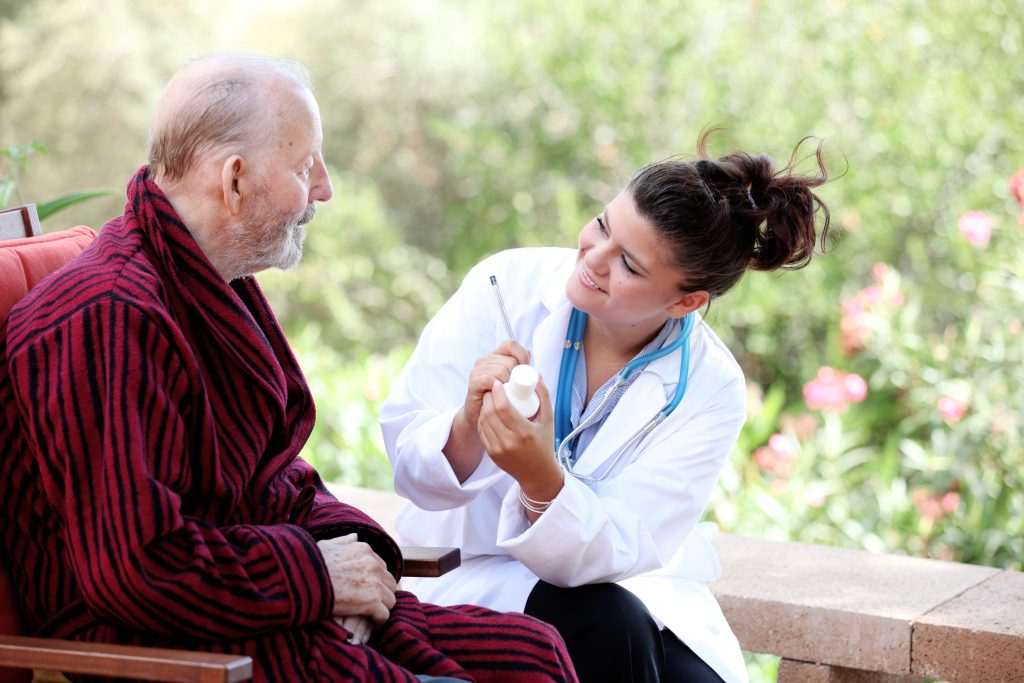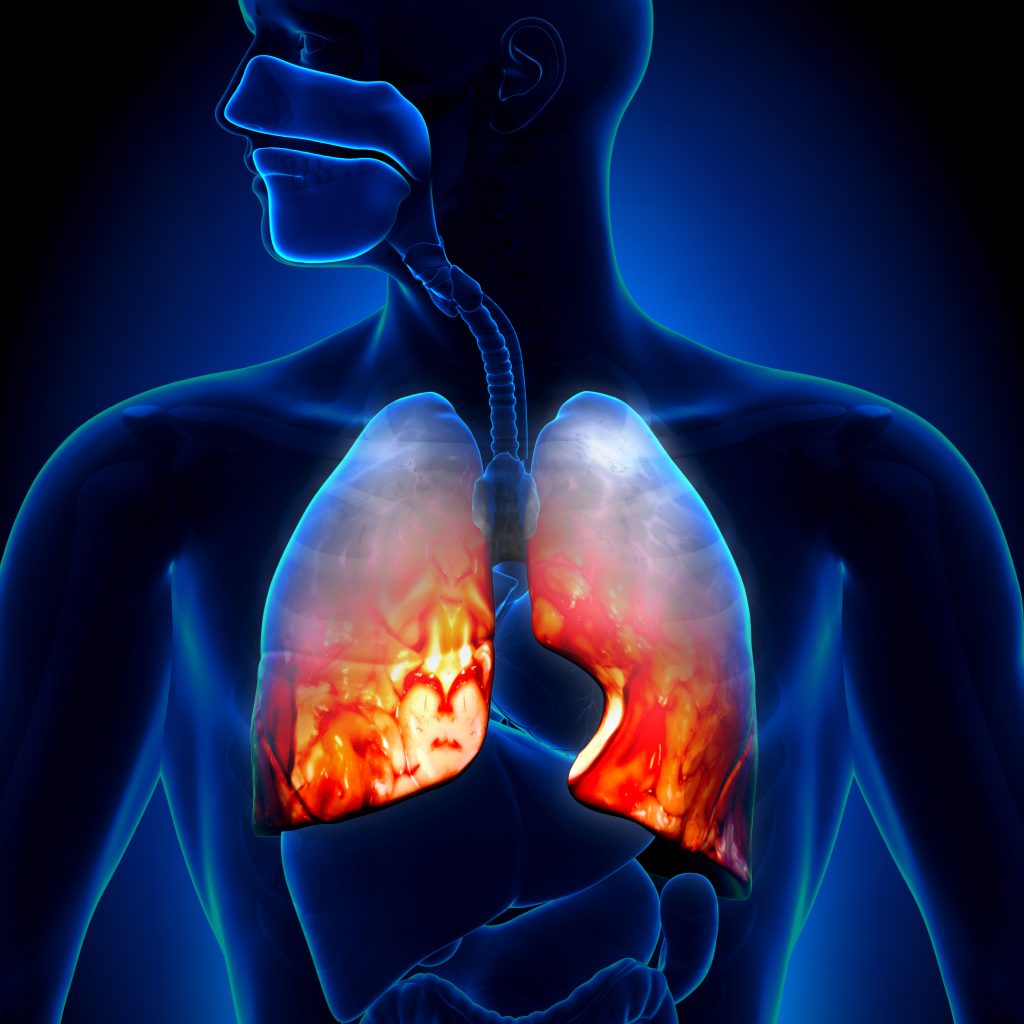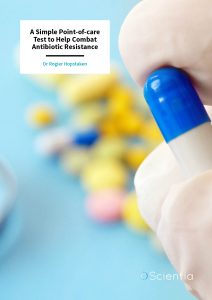Dr Rogier Hopstaken | A Simple Point-of-care Test to Help Combat Antibiotic Resistance
As the strains of bacteria that are not killed by antibiotics proliferate, increasing numbers of people are at risk of severe illness and even death. Dr Rogier Hopstaken from Star-shl Diagnostic Centres in the Netherlands has shown that a simple, yet effective technique may be the answer to antibiotic over-prescription. A C-reactive protein test at primary points of care can indicate whether a patient with a respiratory tract infection has a severe (bacterial) infection and thus, whether antibiotics are required. This test may be our best tool yet to help combat antibiotic resistance in primary care.
The Threat of Antibiotic Resistance
In 1928, Alexander Fleming’s discovery of the Penicillin antibiotic revolutionised healthcare and has saved countless lives since. Antibiotics can shut down a bacterial infection by preventing bacterial reproduction or by killing the bacteria via various mechanisms. Whilst antibiotics are an essential tool for treating disease, their effectiveness in preventing severe illness and death is under threat. Antibiotic resistance, also known as bacterial antimicrobial resistance (AMR), is now one of the biggest dangers to public and global health.
When a bacterial infection is treated with antibiotics, certain bacteria in a patient may hold genetic mutations that allow them to evade detection or destruction by the drugs. These bacteria are described as ‘resistant’ to the antibiotics and they may eventually die or be killed off by the immune system or, they may continue to proliferate. In this case, the infection can become more severe and spread further, requiring the administration of different and stronger antibiotics to overcome it. Worryingly, these strains of antibiotic-resistant bacteria can infect other people and create wide-reaching problems.
There is a direct correlation between the amounts of antibiotics consumed and the growth of AMR. It is without a doubt that the more AMR spreads, the lower the efficacy of antibiotics and as a result, complications and deaths due to AMR increase. Around 4.95 million deaths were related to antibiotic resistance in 2019 (with sub-Saharan Africa feeling the greatest burden of this, followed by South Asia). Nearly 80% of deaths due to antibiotic resistance are due to bloodstream infections, intra-abdominal infections and lower respiratory tract infections – the latter was associated with 1.5 million deaths in 2019. Cases of life-threatening bacterial antimicrobial resistance are on the rise and there are a number of reasons for this.
One contributing factor is the use of antibiotics in livestock as a preventative measure and to improve yields. When resistant bacterial strains evolve in these animals, there is strong evidence to suggest that they can be passed on to humans through their meat. Another important contributor is the extensive over-prescription of antibiotics to patients all over the world. There remains a strong belief that antibiotics will cure everything, and antibiotics remain cheap and easily available. These factors are compounded by a lack of public and professional knowledge regarding effective antibiotic use and the need for conservative treatment. Another factor is that in low and middle-income countries in particular, lack of access to laboratory microbiology testing often impairs decision-making regarding appropriate antibiotic use.
Around the globe, scientists and clinicians are working to better understand the progression of bacterial antimicrobial resistance and how to address it. One of these researchers is Dr Rogier Hopstaken, who is a General Practitioner (GP) and innovation specialist at Star-shl Diagnostic Centres in the Netherlands. Around 80% of all antibiotics for humans are prescribed in primary care. Focus on better antibiotic stewardship in this particular setting is rare, however. Through his investigations, Dr Hopstaken has discovered that most antibiotics are prescribed in a primary care setting (such as a GP’s practice), and for respiratory tract infections. Yet 70% of these infections are caused by viruses and are, therefore, completely untreatable with antibiotics. Most importantly, regardless of the cause, non-severe infections do not require treatment with antibiotics. Dr Hopstaken has made it his life’s mission to evidence and make known an effective new method of antibiotic prescribing to finally minimise the burden of antibiotic resistance. His extensive research allows us to ask and answer key questions about this worldwide dilemma.

Making Decisions About Antibiotic Prescribing
Antibiotics for respiratory tract infections are mostly prescribed based on personal beliefs, perceived patient expectations, patient desire, and findings from patient history taking and physical examination. Whilst some symptoms can be objective and measurable (such as an abnormal body temperature, blood pressure and respiratory rate), others are not (such as chest auscultation, pain, fatigue and gut feeling). This leaves room for misdiagnosis, particularly in presumed pneumonia cases. The mostly self-limiting acute bronchitis cases are often unnecessarily judged to be pneumonia, leading to large-scale overuse of antibiotics. In contrast, secondary care (such as referral to a hospital) often has the resources to allow a deeper investigation to take place before diagnosis, with the added benefits of immunology, microbiology and radiology, for example.
To address this unnecessary, precautionary prescribing of antibiotics, Dr Hopstaken is pushing forward a technique called C-reactive protein point-of-care testing (CRP POCT). Point-of-care testing in family practice is used to inform clinical decision-making, a process through which the patient and physician agree upon the most appropriate way forward.
CRP is an acute-phase protein that is produced by the liver in response to inflammation. By testing CRP levels, physicians can determine whether a respiratory tract infection is severe, and thus, whether antibiotics are required. Dr Hopstaken and his team have shown that CRP is by far the best predictor of pneumonia, performing much better than any symptom or sign, and even better than the combination of all symptoms and signs that help to diagnose pneumonia properly.
‘Together with many other researchers in Europe, we have gathered so much evidence of the added value of CRP POCT in diagnosing pneumonia, and for better antibiotic stewardship.’
Clinical Evidence for C-reactive Protein Point-of-care Testing
Through work conducted over a number of years, Dr Hopstaken’s team has shown how useful CRP POCT can be for reducing unneeded antibiotic use. In two randomised controlled studies, his team has shown that proper introduction of CRP POCT resulted in a 30% reduction of unneeded antibiotic prescriptions. The addition of improved communication skills added considerably to this effect. In their randomised controlled trial published in the British Medical Journal in 2009, the participants were adult patients visiting their GP with acute cough. In their more recent randomised controlled trial, published in 2021 (also in the British Medical Journal), participants were vulnerable elderly individuals with lower respiratory tract infections living in nursing homes. The same, spectacular result was achieved.
Since these studies were performed in a country with one of the lowest antibiotic prescribing rates in the world (the Netherlands), this approach holds much promise globally. Dr Hopstaken, therefore, focuses now on implementing CRP POCT for those countries with much higher antibiotic prescribing rates, and with much higher AMR rates as a consequence, already leading to many unneeded complications and casualties.

Barriers to Implementation
Whilst CRP POCT is very effective, widespread implementation is primarily hindered by funding availability. Although Dr Hopstaken’s team has shown that CRP POCT is cost-effective at a certain willingness to pay or invest, implementation has been processed in the Scandinavian countries, Switzerland and the Netherlands only. If cost-effectiveness studies had taken into account the longer-term benefits of preventing the negative consequences of AMR at the individual, local institution and societal levels, both nationally and globally, the positive impact of implementing CRP POCT economically would have been much larger. Additionally, health systems would have to understand and budget for the fact that the paybacks from CRP POCT may take place in different areas of healthcare from where primary testing takes place. Considerations must also be made to prevent over-testing or overreliance on testing, by integrating POCT effectively into existing systems.
Another important barrier is the existing gap between the traditional hospital laboratory world and primary care. Quality-assured POCT takes place outside the walls of the classical laboratory and effective implementation requires more intensive collaboration than is current practice. Silo-budgeting, lack of multi-disciplinary guidelines, and the lack of time or motivation may currently prevent successful implementation.
International Experience in C-reactive Protein Point-of-care Testing
Since Dr Hopstaken’s studies, there have been numerous other positive studies on CRP POCT in various countries, although it has not yet resulted in the implementation of this effective strategy. In Scandinavian countries, the experiences with CRP POCT are ample, but were not always accompanied by proper guidance when introduced. In the Netherlands, Dr Hopstaken has put a lot of effort to bring various stakeholders together that are needed for long-lasting POCT success. This has resulted in guidelines on when and how to use CRP POCT, and multidisciplinary guidelines on quality aspects and how to collaborate as primary care physicians and laboratory professionals. Evidence suggests that no significant over-testing has occurred in the Netherlands in the past decade after introducing CRP POCT in routine care. In Sweden, some evidence of over-testing with CRP exists, possibly because of the lack of guidance in the early years of introduction.
The existing POCT systems in the Netherlands provide a useful model for how other countries could implement testing. All their testing resources, staff training and quality management are provided by the same organisations that carry out the central laboratory testing. Government reimbursement is usually provided to the supporting laboratory, rather than to the GP. In return, the GP can test for free and has no significant administrative and logistic burden. In addition, Dr Hopstaken has co-authored guidelines for his and other countries to use. Combining POCT implementation results from Australia and the Netherlands reveals that when GPs adapt and integrate testing into their practice, it improves their efficiency.

What Are the Next Steps?
Dr Hopstaken explains, ‘Together with many other researchers in Europe, we have gathered so much evidence of the added value of CRP POCT in diagnosing pneumonia, and for better antibiotic stewardship. We have also proven that care professionals and patients are extremely satisfied with CRP POCT and our intervention strategy to communicate better with patients on the topic of lower respiratory tract infection, illness aspects, antibiotics and AMR.’ He further notes, ‘We have shown a possible best case of implementation of those in the Netherlands. But if we want to have an impact on AMR, we need to bring this across the border and collaborate globally. We need to involve all crucial stakeholders, including policymakers and the diagnostic industry, to find solutions to existing barriers to implementation of CRP POCT.’
Most importantly, Dr Hopstaken wants to improve the diagnostic and communication processes used by physicians so that more patients with pneumonia get the antibiotics they need and those with minor illnesses are prescribed them less frequently. To achieve this, he argues that a support model must also be created for GPs to facilitate integration, and ensure the quality and monitoring of testing and antibiotic prescribing. Finally, Dr Hopstaken believes the funding or reimbursement of POCT should be seen as a wider investment in better healthcare as a whole, with the caveat that perversive incentives for testing should not be created. Although CRP POCT and better communication styles will play an important role in reducing antibiotic resistance, it should be seen as one intervention in a multi-step process. As such, behavioural and regulatory processes for antibiotic use should also be enforced.
Through his extensive research into CRP POCT, Dr Hopstaken has shown that this manner of antibiotic stewardship could pave the way to finally addressing antibiotic resistance, starting with general practice where most antibiotics are prescribed, and then beyond.
SHARE
DOWNLOAD E-BOOK
LISTEN TO THE AUDIO
REFERENCE
https://doi.org/10.33548/SCIENTIA829
MEET THE RESEARCHER

Dr Rogier Hopstaken
Star-shl Diagnostic Centres
Etten-Leur/Rotterdam
The Netherlands
Dr Rogier Hopstaken is a General Practitioner in Hapert in the Netherlands and also works as an innovation specialist at Star-shl Diagnostic Centres in Etten-Leur/Rotterdam. Much of his research centres around point-of-care testing (POCT) and in collaboration with a number of universities, he studies the value of POCT, and how proven tests can be effectively implemented. He has a particular interest in lower respiratory tract infections, antimicrobial resistance, and C-reactive protein POCT. Dr Hopstaken is the principal author of the Dutch guideline on POCT in general practice, and is chairing the Special Interest Group of POCT of the World Organization of Family Doctors (WONCA).
CONTACT
E: Rogier.hopstaken@maastrichtuniversity.nl, r.hopstaken@star-shl.nl
W: https://star-shl-innovatie.nl/2021/en/
Twitter: @StarSHL_
KEY COLLABORATORS
Prof JWL Cals and Prof GJ Dinant, Maastricht University Medical Center, Netherlands
Prof TJM Verheij and Dr FJ Loots, University Medical Center Utrecht, Netherlands
Prof R Kusters, Wageningen University and Research, Netherlands
Prof CP Price, University of Oxford, Oxford, UK.
Drs A van der Put, Star-shl Diagnostic Centers, Netherlands
FURTHER READING
FK Loots, M Smits, RM Hopstaken, et al., New clinical prediction model for early recognition of sepsis in adult primary care patients: a prospective diagnostic cohort study of development and external validation, British Journal of General Practice, 2022, 72(719), e437-e445. DOI: https://doi.org/10.3399/BJGP.2021.0520
A St John, R Hopstaken, R Tirimacco, et al., Implementing point-of-care CRP testing for better diagnosis of acute respiratory infections, Britsh Journal of General Practice, 2022, 72(715), 87–88. DOI: https://10.3399/bjgp22X718517
TM Boere, LW van Buul, RM Hopstaken, et al., Effect of C reactive protein point-of-care testing on antibiotic prescribing for lower respiratory tract infections in nursing home residents: cluster randomised controlled trial, British Medical Journal, 2021, 374, n2198. DOI: https://doi.org/10.1136/bmj.n2198
RM Hopstaken, JA van Balen, R Kusters, ‘Point-of-care testing’ in de huisartsenzorg [Point-of-care-testing in general practice], Ned Tijdschr Geneeskd, 2015, 159, A9475.
JWL Cals, MJC Schot, SAM de Jong, et al., Point-of-care C-reactive protein testing and antibiotic prescribing for respiratory tract infections: a randomized controlled trial, Annals of Family Medicine, 2010, 2, 22–34. DOI: https://doi.org/10.1370/afm.1090
JWL Cals, CC Butler, RM Hopstaken, et al., Effect of point of care testing for C-reactive protein and training in communication skills on antibiotic use in lower respiratory tract infections: cluster randomised trial, British Medical Journal, 2009, 338, b1374. DOI: https://doi.org/10.1136/bmj.b1374
RM Hopstaken, S Coenen, CC Butler, Treating patients not diagnoses: challenging assumptions underlying the investigation and management of LRTI in general practice, Journal of Antimicrobial Chemotherapy, 2005, 56(5), 941–3. DOI: https://doi.org/10.1093/jac/dki330
RM Hopstaken, JWM Muris, JA Knottnerus, et al., Contributions of symptoms, signs, erythrocyte sedimentation rate and C-reactive protein to a diagnosis of pneumonia in acute lower respiratory tract infection, British Journal of General Practice, 2003, 53, 358–64.

REPUBLISH OUR ARTICLES
We encourage all formats of sharing and republishing of our articles. Whether you want to host on your website, publication or blog, we welcome this. Find out more
Creative Commons Licence (CC BY 4.0)
This work is licensed under a Creative Commons Attribution 4.0 International License. 
What does this mean?
Share: You can copy and redistribute the material in any medium or format
Adapt: You can change, and build upon the material for any purpose, even commercially.
Credit: You must give appropriate credit, provide a link to the license, and indicate if changes were made.
SUBSCRIBE NOW
Follow Us
MORE ARTICLES YOU MAY LIKE
Dr Ralf Adam | New Technologies Shaping the Future of Oral Hygiene
Understanding the efficiency of various toothbrush technologies is essential for achieving optimal oral health. Dr Ralf Adam, who leads a dedicated team at Procter & Gamble in Germany, is keen to investigate the complexities of these technologies. His team have provided new insights into the best toothbrush types for plaque removal and the maintenance of gum health. By highlighting the importance of informed oral care decisions and ongoing investigations, this vital research works towards ensuring everyone can achieve a brighter, healthier smile.
Dr Toby Phesse | Revealing the Mysteries of Wnt Signalling: Novel Approaches to Beating Cancer
Cancer remains a leading cause of mortality worldwide, and the need for new, more effective treatments remains an urgent challenge. Dr Toby Phesse from Cardiff University in the UK focuses on the role of the Wnt receptor found on the surface of cells and its involvement with cell communication and cancer growth, bringing fresh hopes for new therapeutic options.
Dr Vijay Reddy | The Virus World Database: An Invaluable Resource for Public Health and Healthcare
Severe viral disease presents an ongoing challenge to the health of humankind. While unparalleled developments in science and technology are improving our understanding of such viruses, this information needs to be readily accessible to researchers to ensure continued progress in public health and healthcare. Dr Vijay Reddy and his colleagues at the Hormel Institute (University of Minnesota) developed the Virus World database, an invaluable resource that details the genome, structure, and host of practically every discovered virus to date.
Professor Ralf Herwig | Deciphering the Enigma of Vitamin D and the Immune System
Vitamin D has been studied as a treatment for a large number of diseases and conditions, from cancer to autism to COVID-19. However, its mode of action is not completely understood. Professor Ralf Herwig carries out his research at HG Pharma GmbH (Austria) and Ulster University (UK). His vital work explores the role of vitamin D in the body with a view to unlocking its potential as a treatment for a variety of health conditions involving the immune system.





